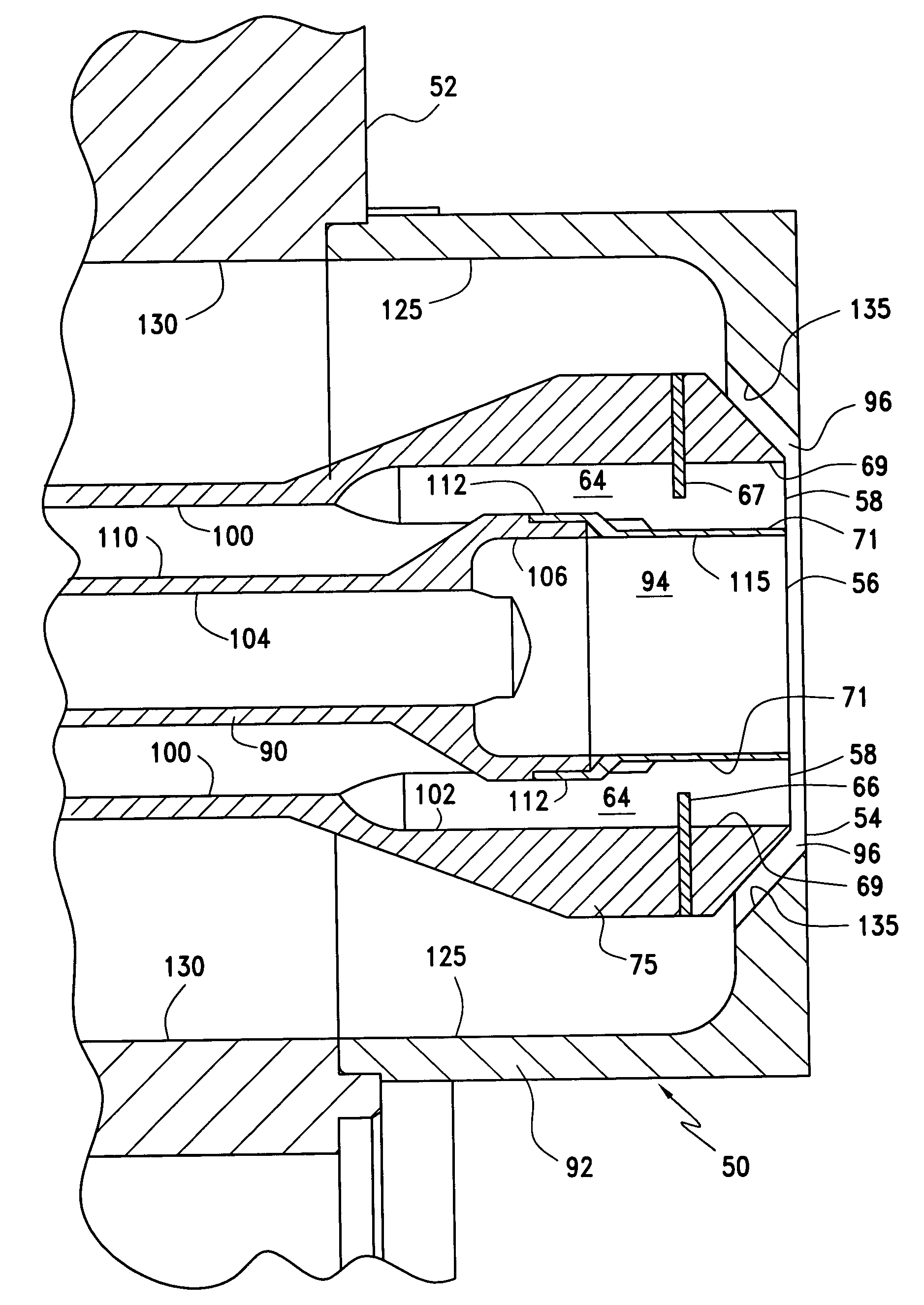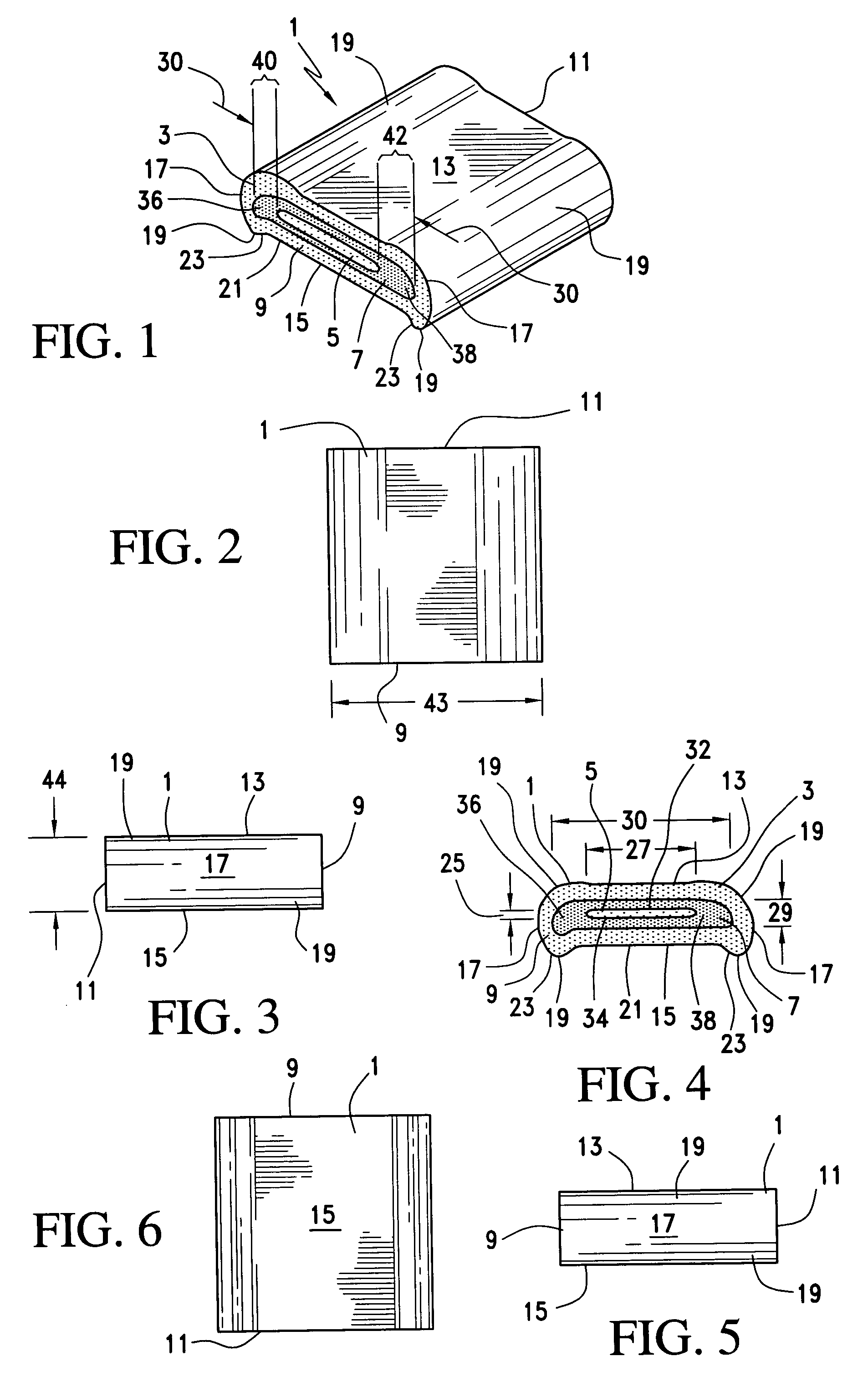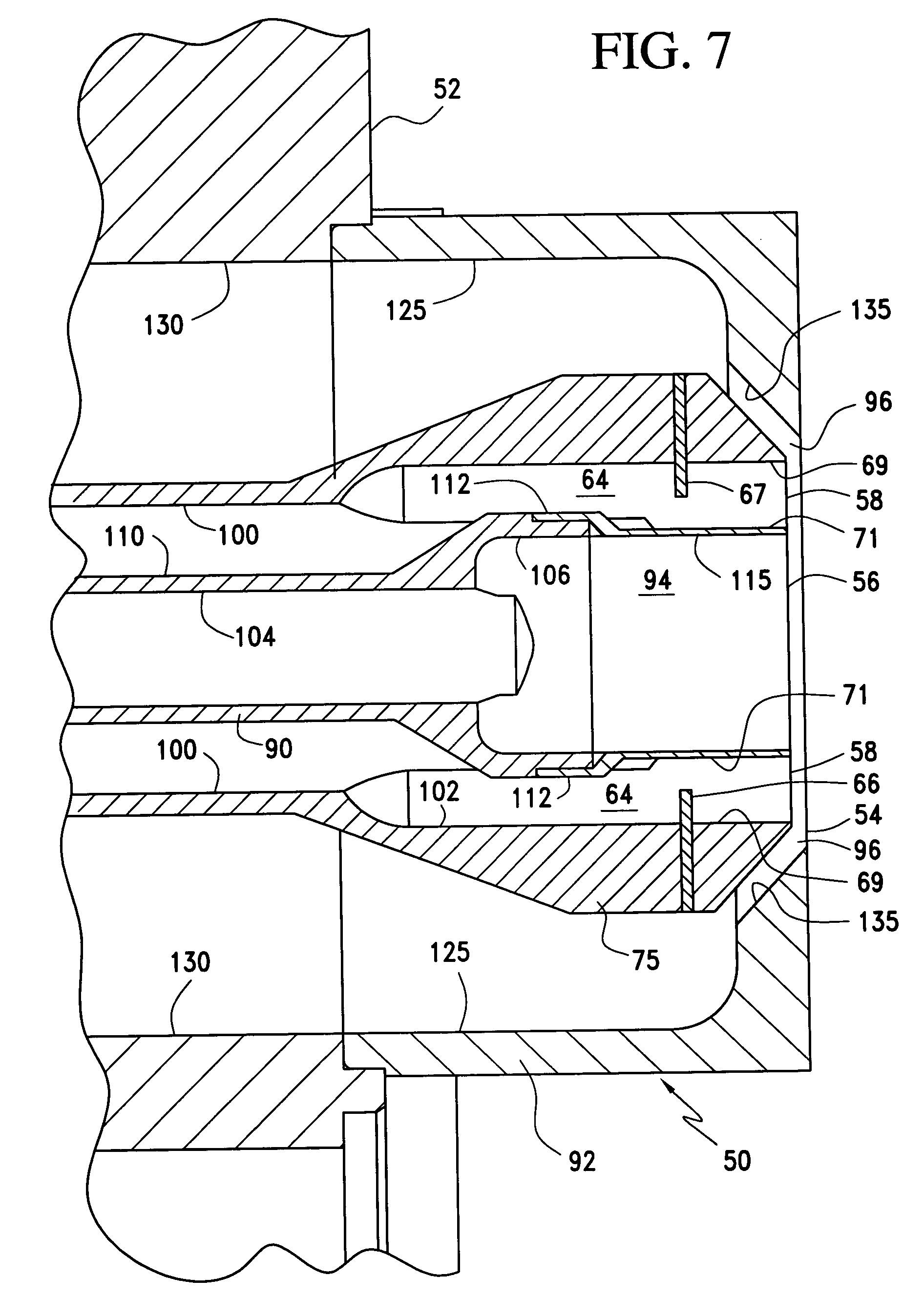Production of triple coextruded baked bar goods
a coextrusion and baked bar technology, applied in bakery products, milk preservation, applications, etc., can solve the problems of insufficient mass flow rate, high back pressure, and non-uniformity of individual layers in the product, so as to prevent unevenness and discontinuity in the top and bottom regions, and increase pressure
- Summary
- Abstract
- Description
- Claims
- Application Information
AI Technical Summary
Benefits of technology
Problems solved by technology
Method used
Image
Examples
Embodiment Construction
[0066]The present invention provides a method for producing a triple extrusion, or triple coextruded baked good having a bar shape with a substantially smaller height than width. For example, the ratio of the maximum cross-sectional width to the maximum cross-sectional height of the baked good may be at least about 1.75:1, generally at least about 2.5:1, for example from about 2.7 to 4:1, preferably about 3:1. Post-extrusion shaping or mechanical flattening of the triple extruded product with a roller is not needed prior to or after baking to achieve an oblong or curved rectangle cross-sectional shape in a triple coextruded baked snack. Elimination of mechanical shaping and relying solely upon oven spread to achieve a desired cross-sectional profile in the baked good avoids sticking and tearing of the outer dough or casing by the post extrusion shaping equipment. Triple coextruded bar shaped products such as cookies with dissimilar concentric fillings, such as a fruit filling which ...
PUM
 Login to View More
Login to View More Abstract
Description
Claims
Application Information
 Login to View More
Login to View More - R&D
- Intellectual Property
- Life Sciences
- Materials
- Tech Scout
- Unparalleled Data Quality
- Higher Quality Content
- 60% Fewer Hallucinations
Browse by: Latest US Patents, China's latest patents, Technical Efficacy Thesaurus, Application Domain, Technology Topic, Popular Technical Reports.
© 2025 PatSnap. All rights reserved.Legal|Privacy policy|Modern Slavery Act Transparency Statement|Sitemap|About US| Contact US: help@patsnap.com



